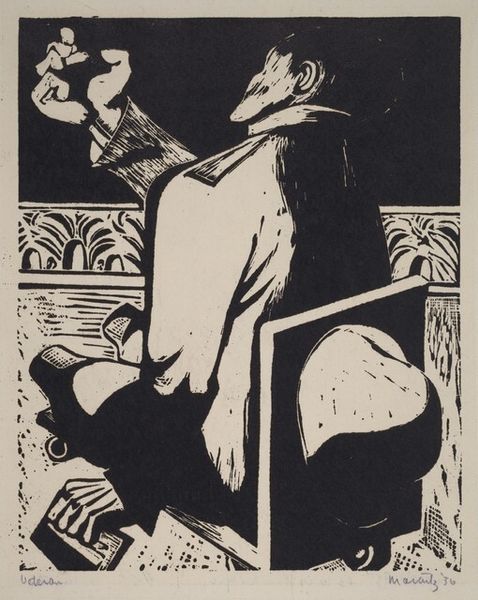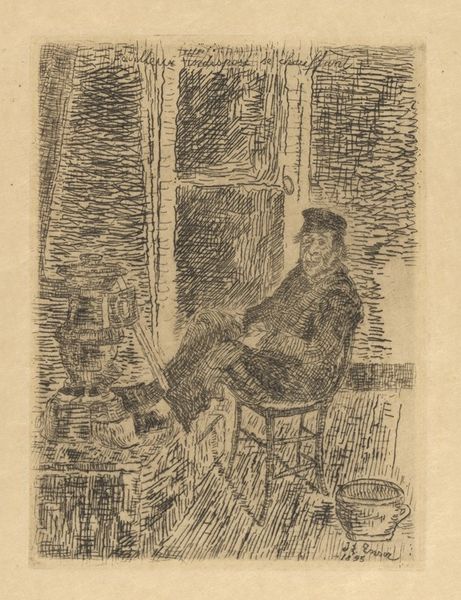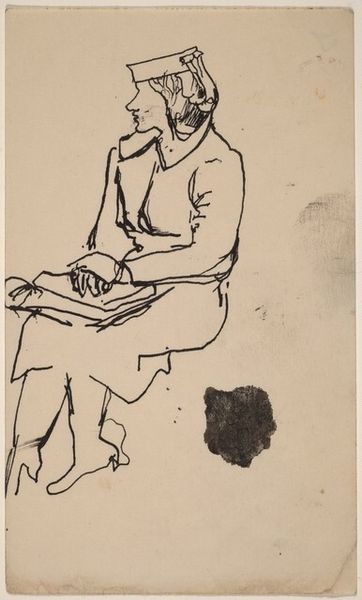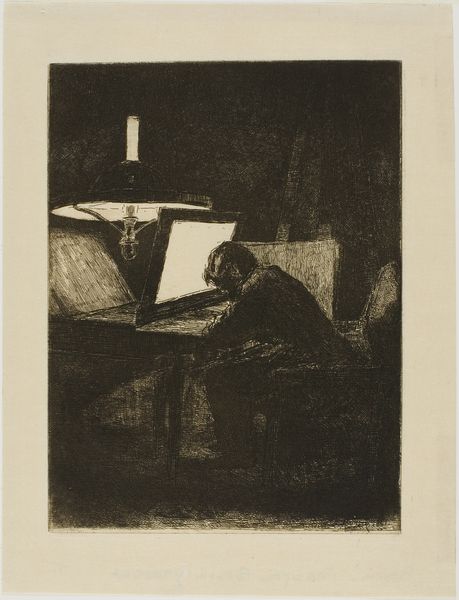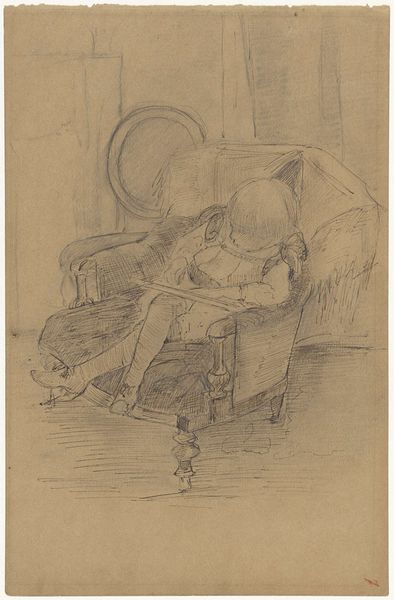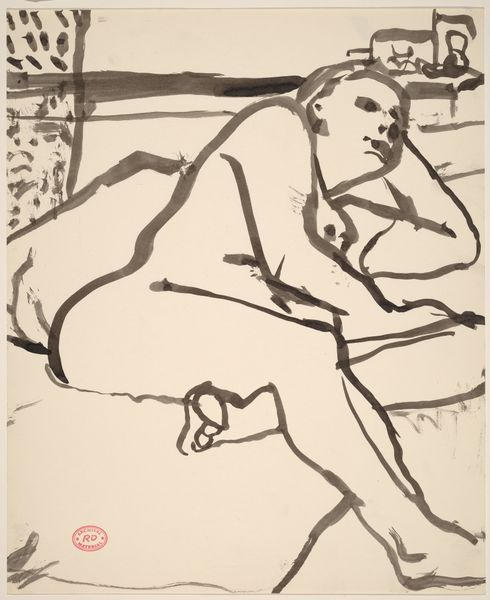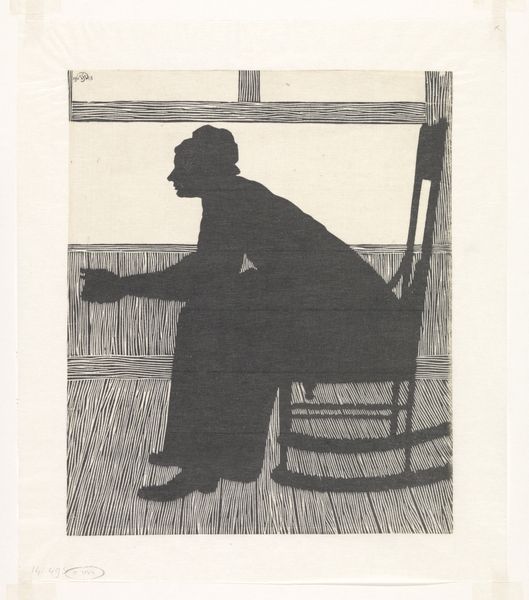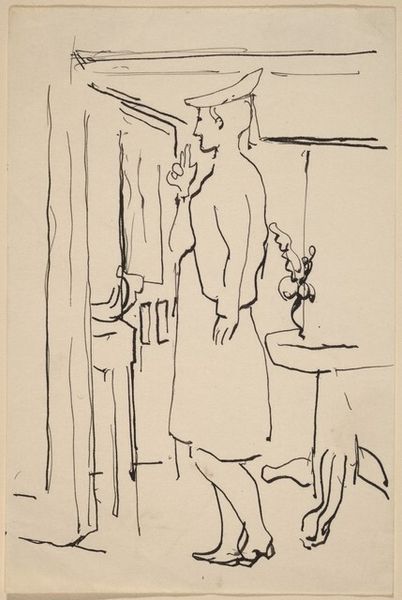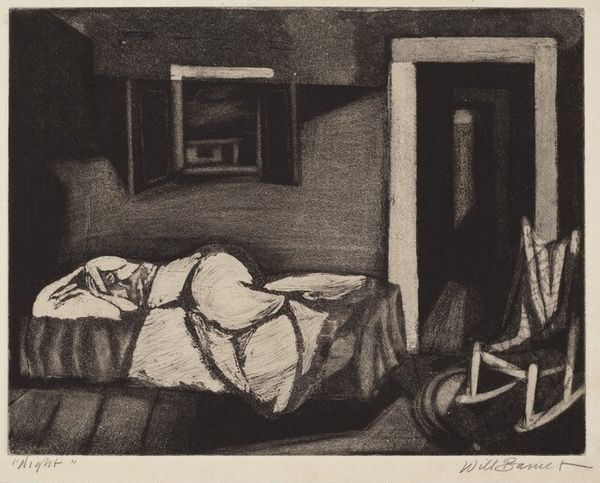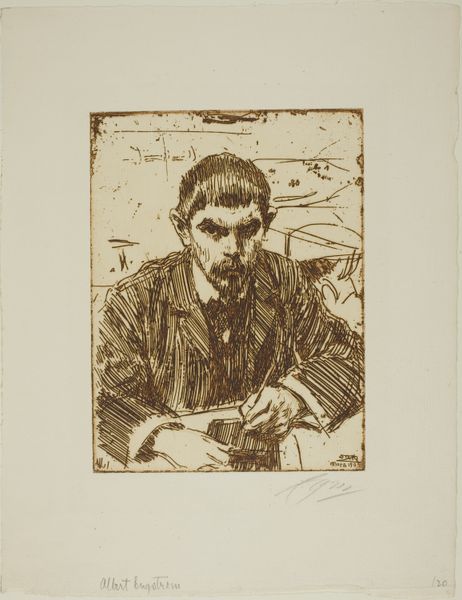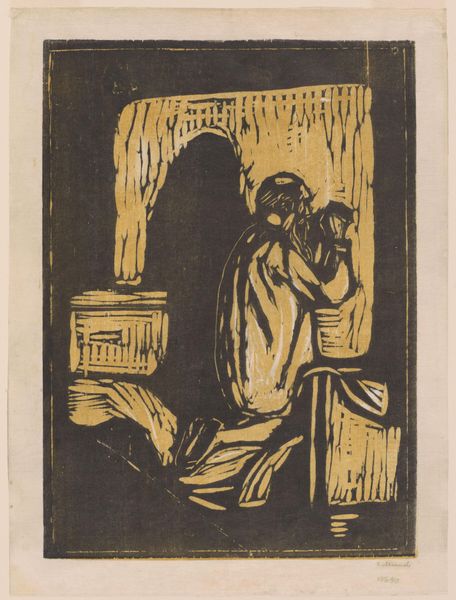
drawing, print, linocut, ink
#
portrait
#
drawing
#
ink drawing
# print
#
linocut
#
ink
#
linocut print
#
expressionism
Dimensions: block: 27.5 x 25.5 cm (10 13/16 x 10 1/16 in.) sheet: 33 x 28.9 cm (13 x 11 3/8 in.)
Copyright: National Gallery of Art: CC0 1.0
Curator: Welcome. Today, we're looking at "Curt Blass," a linocut print made in 1905 by the Swiss artist Cuno Amiet. Editor: Stark, isn't it? The solid blacks and rough edges… it gives a feeling of unease, almost anxiety. It's not exactly inviting. Curator: Expressionism, for sure, trying to represent emotion, not objective reality. This piece came about during a pivotal period in Amiet's career, influenced by the avant-garde movements percolating through Europe at the time. Editor: And what a powerful use of the linocut! That bold simplicity. The artist has deliberately chosen a method where they must cut away the material, subtract to find form. There's a physical struggle there, I imagine. It contrasts against a society with its rising industries of manufacturing goods to the demands of comfort. Curator: Right. The linocut as a medium experienced a surge in popularity in the early 20th century as artists turned towards printmaking. The lower costs, ease of execution, and accessible materials gave rise to printmaking collectives across Europe, effectively democratizing access to artistic production. Editor: Yes, the act of carving becomes intrinsically linked to the final image, doesn't it? I'm fascinated by the way he’s captured the texture of the cushion and the floor covering, or the table piled with… is it books or food? And the portrait in the background. These small everyday touches that define the domestic space, almost as much as define his wealth through them. Curator: Interesting point. In truth, there’s also a quiet intimacy here, a glimpse into a private sphere that wouldn't have been so readily shared otherwise. And don’t forget, printmaking also facilitated the spread of images and ideas – political statements could be circulated far and wide. Amiet here is demonstrating mastery with accessible methods and with an image for potential proliferation to challenge his more privileged sitter. Editor: He captures something very specific. It also is compelling to notice the contrast. Curt’s black suit sits as a solid block in counterpoint to the lined material surrounding. It lends an additional aura of gravitas but through a conscious use of materials, labor and output for this portrait. Curator: Indeed. He really challenges the sitter's gravitas with this work by not attempting to fully deliver his visual being to a viewer's access. Something the establishment resisted as such. I wonder how his patron reacted, to receive and host it at their home, or perhaps hide it away. Editor: Ultimately, both in approach, skill and composition Amiet provides his sitter as anything other than static or fully comfortable through his labor and material output for that period of art production. Curator: A fascinating piece with layers of social, cultural, and historical relevance. Thank you for joining me as we discussed the merits of this particular Expressionist-styled portraiture. Editor: Yes, a powerful work. Makes you appreciate the materiality and production so obviously demonstrated within.
Comments
No comments
Be the first to comment and join the conversation on the ultimate creative platform.

